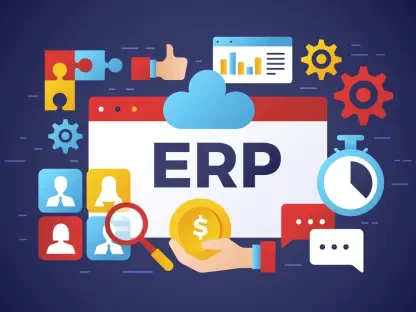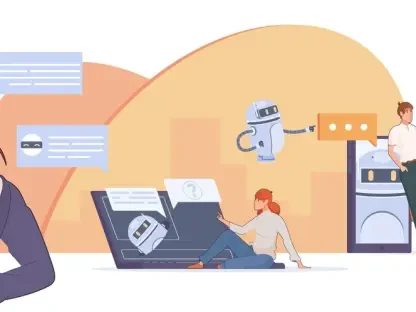Welcome to an insightful conversation with Vijay Raina, a distinguished expert in enterprise SaaS technology and tools. With a deep background in software design and architecture, Vijay provides thought leadership that helps SaaS companies navigate the complexities of modern revenue operations. In this interview, we dive into the transformative power of Configure Price Quote (CPQ) software, exploring how it streamlines sales processes, enhances data-driven decision-making, and drives operational efficiency for SaaS businesses. We’ll discuss the seamless integration of workflows, the impact of automation on sales cycles, and the strategic benefits of turning quotes into actionable insights. Join us as we unpack these critical topics with Vijay’s expert perspective.
How does CPQ software fundamentally change the sales process for SaaS companies, and what makes it a game-changer compared to older methods?
CPQ software revolutionizes the sales process for SaaS companies by bringing structure and automation to what used to be a fragmented, manual effort. Unlike older methods—think spreadsheets or static PDFs—CPQ creates a streamlined flow from configuring products to generating quotes and closing deals. It’s a game-changer because it eliminates the guesswork and errors that come with manual data entry or disjointed tools. Sales reps can configure complex pricing models, apply discounts, and ensure compliance with predefined rules, all within a single platform. This not only speeds up the quoting process but also builds trust with customers through accuracy and transparency. Ultimately, it lets sales teams focus on selling rather than wrestling with paperwork.
Can you walk us through how CPQ creates a unified workflow from the initial quote all the way to cash collection?
Absolutely. CPQ software acts as a bridge connecting every stage of the revenue cycle. It starts with quote creation, where reps use guided templates to configure products and pricing. From there, built-in approval workflows route the quote to the right stakeholders—whether that’s finance or legal—for review, often automating approvals for standard deals. Once approved, features like e-signature allow customers to sign off directly in the platform, eliminating the need for external tools. After the deal is signed, CPQ syncs all the data—line items, terms, pricing—directly to billing systems and CRMs. This ensures that what was quoted is exactly what gets billed, reducing friction and errors. It’s a seamless, end-to-end process that ties quoting to cash collection without manual handoffs.
What are some of the biggest pain points in sales operations that CPQ software addresses, and how does it impact efficiency?
One of the biggest pain points CPQ tackles is the inefficiency of manual processes. Sales teams often waste hours formatting quotes, chasing approvals through email or chat apps, and re-entering data into multiple systems after a deal is signed. CPQ automates these repetitive tasks—whether it’s generating quotes with pre-set pricing rules or routing approvals based on deal complexity. Another major issue is error-prone quoting, like mismatched pricing or incorrect terms, which can lead to revenue leakage or customer dissatisfaction. CPQ ensures accuracy by standardizing data and syncing it across platforms. The impact on efficiency is huge: sales cycles shorten, teams collaborate better, and there’s less back-and-forth. It frees up time for reps to focus on building relationships and closing more deals.
How does the integration of CPQ with CRM and billing systems enhance collaboration across different teams like sales, finance, and operations?
Integration is where CPQ really shines in fostering collaboration. By connecting with CRMs like Salesforce or HubSpot, CPQ ensures that sales data—such as deal status, pricing, and terms—is updated in real time, giving everyone from sales to finance a single source of truth. When a quote is finalized, the same data flows directly into billing systems, so operations teams don’t have to rekey information or fix discrepancies. This eliminates silos and miscommunication between departments. For instance, finance can trust the numbers for forecasting, while operations can execute billing without delays. Features like inline commenting and version tracking also allow teams to discuss and refine quotes within the platform, cutting down on endless email threads. It’s about aligning everyone on the same page, driving smoother handoffs and better teamwork.
What role does data play in CPQ software, and how can SaaS companies leverage it for strategic decision-making?
Data is at the heart of CPQ software—it transforms quoting from a transactional task into a strategic asset. Unlike static documents, CPQ captures every detail of a quote—products, pricing, terms, discounts—as structured, searchable data in a cloud-based system. SaaS companies can leverage this to gain insights into deal trends, customer preferences, and pricing performance. For example, leaders can analyze which products are frequently bundled or which discounts drive higher win rates, then use that to refine sales strategies. Real-time syncing with CRMs also means forecasts are based on actual in-progress deals, not estimates, which helps finance and sales plan with confidence. It’s about turning every quote into a building block for smarter decisions, from renewals to upselling opportunities.
How do features like automated approvals and e-signatures contribute to speeding up the sales cycle while maintaining control over the process?
Automated approvals and e-signatures are critical for accelerating the sales cycle without sacrificing governance. With automated approvals, CPQ uses logic-based workflows to route quotes to the right people only when necessary. Standard deals can be auto-approved based on predefined rules, while nonstandard ones—like unique pricing or terms—get flagged for manual review by finance or legal. This cuts down on unnecessary delays while ensuring oversight where it matters. E-signatures take it a step further by letting customers sign contracts directly within the platform, removing the friction of switching tools or waiting for physical signatures. Together, these features shrink the time from quote to close, sometimes by days or weeks, while still maintaining checks and balances to protect the business.
What is your forecast for the future of CPQ software in the SaaS industry, especially as businesses scale and face more complex pricing models?
I see CPQ software becoming even more integral to the SaaS industry as businesses scale and pricing models grow increasingly complex. With the rise of usage-based pricing, tiered subscriptions, and hybrid models, manual quoting just won’t cut it anymore. CPQ will evolve to handle these intricacies with more advanced automation and AI-driven insights, helping companies dynamically adjust pricing based on real-time market data or customer behavior. I also expect deeper integrations with other revenue tools, creating fully connected ecosystems where data flows effortlessly from sales to billing to customer success. As SaaS companies expand globally, CPQ will likely incorporate more localization features—think multi-currency support or regional compliance rules—to support diverse markets. Ultimately, CPQ will be the backbone of revenue operations, enabling scalability without the growing pains.









